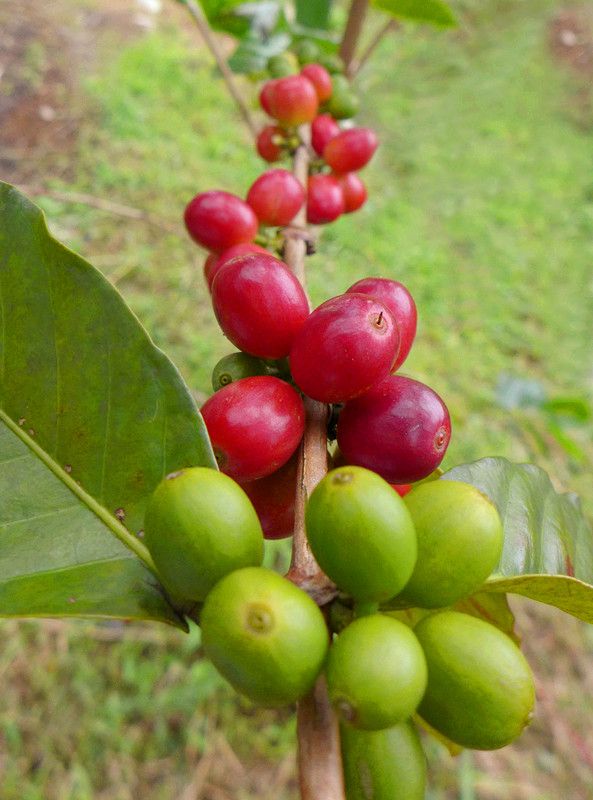A brief talk on the Regional Flavor of Coffee in Central America-- Panama, which is famous for its rosy summer

Professional barista communication, please pay attention to coffee workshop (Weixin Official Accounts cafe_style )
Boquete is Panama's oldest and most famous coffee-producing area, located on the east side of the Baru volcano, at an altitude of about 1000- 2000 meters. The ecological environment of Bokui specialty area is intact and the rainfall is abundant. The good planting environment makes the coffee in Bokui specialty area have unique aroma. It is the most productive and best quality producing area in Panama.
La Esmeralda is one of the most prominent estates in the Boqui specialty area. Since winning the "Best Panama" Cup Test in 2004, he has repeatedly won awards in various cup tests, and has repeatedly set new high prices at bidding auctions, even triggering a wave of Geshia.
"Geisha" is the name of coffee varieties, rumored to be transplanted from Africa to Panama, because the tree type is relatively tall, so it was used as a windbreak, until later was discovered this humble windbreak, its fruit unexpectedly has an unexpected taste, not only with jasmine flowers, citrus sour, apricot sweet, but also refreshing tea feeling, such a unique flavor makes "Geisha" coffee become a star that cannot be ignored.
"molasses home on the tip of the tongue"
Central America, connecting the two continents of South and North America, bordering the Caribbean Sea to the east and the Pacific Ocean to the west, has a narrow terrain and is greatly affected by the marine climate. Central America is mountainous terrain, volcanic activity, natural volcanic ash also makes the soil particularly fertile, a variety of environmental factors create Central America has unique coffee cultivation conditions. Central America was colonized by Spain until 1821. Coffee beans are said to have been brought in during the Spanish colonial period and were initially grown only in Costa Rica, but later in Central America.
It is no exaggeration to say that Central America is the "home of molasses on the tip of the tongue". The coffee flavor of Central America has always been characterized by "sugar fragrance". In addition to molasses aroma, it also has a soft taste of soft fruit acid, giving coffee more layers of flavor. Even coffee grown in volcanic areas, some can taste the light smoke aroma and mellow taste brought by volcanoes.
Day and night temperature difference "brew" molasses taste
The reason why Central American coffee has molasses taste is that volcanoes stand high and the terrain is high. Coffee beans are planted on the slopes at higher altitudes. During the day, they receive sunshine bath, and at night, there is a gentle sea breeze to adjust to cool temperature. In such geographical environment, the temperature difference between day and night is large, which prolongs the ripening time of coffee fruit, but makes the fruit sweeter and more full, becoming the molasses taste unique to Central America.
Important Notice :
前街咖啡 FrontStreet Coffee has moved to new addredd:
FrontStreet Coffee Address: 315,Donghua East Road,GuangZhou
Tel:020 38364473
- Prev

A brief talk on the Regional Flavor of Coffee in Central America-- El Salvador, the smallest in Central America
Professional barista exchanges please pay attention to the coffee workshop (Wechat official account cafe_style) El Salvador is the smallest country in Central America, only about 3/5 the size of Taiwan, although the area is small, it has 25 volcanoes large and small, volcanoes can bring a lot of ash and fertile soil, but every day they have to face the threat of active volcanoes, which make local residents both love and fear.
- Next

Taste region │ South America ─, the largest coffee producing region in the world
Professional barista communication please follow the coffee workshop (Wechat official account cafe_style) do you know? South America is the largest coffee producing area in the world. While people focus on production, in fact, there are more environmental issues to pay attention to. The world's largest total output refers to the number one producing area in the coffee industry, and there is no doubt that it is South America and Brazil. Its coffee output is about
Related
- Does Rose Summer choose Blue, Green or Red? Detailed explanation of Rose Summer Coffee plots and Classification in Panamanian Jade Manor
- What is the difference between the origin, producing area, processing plant, cooperative and manor of coffee beans?
- How fine does the espresso powder fit? how to grind the espresso?
- Sca coffee roasting degree color card coffee roasting degree 8 roasting color values what do you mean?
- The practice of lattes: how to make lattes at home
- Introduction to Indonesian Fine Coffee beans-- Java Coffee producing area of Indonesian Arabica Coffee
- How much will the flavor of light and medium roasted rose summer be expressed? What baking level is rose summer suitable for?
- Introduction to the characteristics of washing, sun-drying or wet-planing coffee commonly used in Mantenin, Indonesia
- Price characteristics of Arabica Coffee Bean Starbucks introduction to Manning Coffee Bean Taste producing area Variety Manor
- What is the authentic Yega flavor? What are the flavor characteristics of the really excellent Yejasuffi coffee beans?

